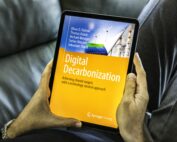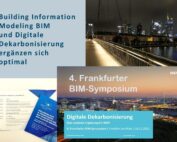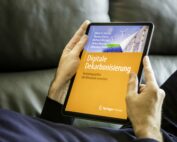Digital Decarbonization
Nineteen of the twenty warmest years to date have occurred since the turn of the millennium. Weather extremes are increasing more and more. These phenomena are due to the concentration of greenhouse gases in the atmosphere, which has been steadily increasing since the beginning of industrialization. – We must act now.
How can digital technologies help tackle climate change?
Digitalization leverages a whole bundle of new technologies that transform analog information into digital information. Digital technology today enables real-time insights as well as predictions and even autonomous interventions in systems of all types. The focus is consistently on data, which are also required for the intelligent management of energy resources and consumption. A substantial benefit for saving the climate! After all, the better an energy system is optimized by digitalization, the fewer greenhouse gases are then released.
What is meant by energy systems?
Energy systems are understood as the sum of all power plants, solar plants, wind turbines, electrical devices, etc. installed in a location or region. Accordingly, these are technical components that generate or consume energy. Physically correct, however, we should speak about energy conversion.
What’s new about Digital Decarbonization?
Digital Decarbonization goes far beyond conventional optimization approaches when planning and controlling energy systems. Here, neither the performance of each individual energy plant is optimized in isolation, nor any energy-intensive processes are only upgraded by digital technology. Experience shows that these conventional approaches often fall short. Significant improvement potential for more climate protection remains unutilized as a result.
Digital Decarbonization first creates a digital twin of the existing energy system. This digital model enables optimal planning in terms of type, design and configuration for all the components in consideration, such as power plants, solar plants, grids and machines. In addition, Digital Decarbonization ultimately also enables energy-efficient normal operation of energy systems on a minute-by-minute basis and thereby an overall reduction in CO2 emissions.
Which sectors are particularly relevant to Digital Decarbonization?
At first glance, the focus is on the energy industry itself, but that would be oversimplifying. It is precisely the integrative optimization of the users’ perspective, i.e., transportation, infrastructure for public services, commercial and residential buildings and, of course, all industries as well as agriculture, that must be mapped out in logical clusters. The already popular Smart City, for example, constitutes such a cluster.
All sectors and their interactions between each other are to be considered in order to identify the best possible decarbonization under locally given framework conditions. Accordingly, the decision-makers will be digitally supported in the respective sectors to find both technologically and economically viable solutions for their own decarbonization.
Which are the cases we have already used Digital Decarbonization for?
Digital Decarbonization has already been used in numerous and economically successful projects. For instance, this system was used to determine an economically viable carbon dioxide savings potential of up to 75 percent by 2030 in the district heating sector for a municipal energy supplier in North Germany.
In another use case, a large industrial dairy, the methodology was able to outline a realistic path for saving up to 40 percent carbon dioxide while keeping costs stable.





